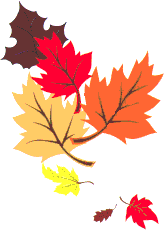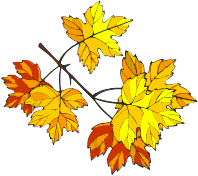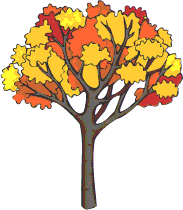The
Wisdom of Pigments
 One of the things I love about teaching young people is their wonderful
expressions of amazement when they learn something. Some years ago, I was
teaching my physics class about the nature of color and pigmentation when
one of my students burst out with "Wow! Who thought that up?" One of his
friends laughed and said, "God did, dummy, and you're too stupid to understand."
One of the things I love about teaching young people is their wonderful
expressions of amazement when they learn something. Some years ago, I was
teaching my physics class about the nature of color and pigmentation when
one of my students burst out with "Wow! Who thought that up?" One of his
friends laughed and said, "God did, dummy, and you're too stupid to understand."
The fact of the matter is that statement is only half-right. We can all
understand color and how we perceive it, but the wisdom and design that allows
us to even exist denies the possibility of chance as the cause of all we
see.
There is a difference between colors of light and pigments. Light has
a certain energy which is caused by its frequency. We see blue light differently
than we see red light because blue light has a higher energy, Pigments, on
the other hand, are chemicals. A blue shirt is blue because the molecules
in the shirt reflect blue and absorb all other colors or energies of light.
A green shirt is green because it reflects light in the green part of the
spectrum and absorbs everything else. A black shirt absorbs all light particles,
while a white shirt reflects all particles of light.
 Pigments are critical to our perception of color, but they also provide for
the survival of all living things. Trees are green because they reflect green
light. What many people do not know is that green is the highest energy of
light coming to the earth directly from the sun. By trees being green, they
reflect this damaging radiation and protect the trees from solar damage.
When trees lose their green pigment in the fall, the leaves are literally
cooked by the sun. Chlorophyl A in the leaves of trees reflects various wave
lengths, but there are some special energies that Chlorophyl A absorbs.
In the spring, there is a certain time when the energy of light that triggers
plants to start budding out reaches the leaf surface. These energies happen
to correspond to the chlorophyl absorption lines so plants are turned on in
the spring and turned off in the fall by these energies.
Pigments are critical to our perception of color, but they also provide for
the survival of all living things. Trees are green because they reflect green
light. What many people do not know is that green is the highest energy of
light coming to the earth directly from the sun. By trees being green, they
reflect this damaging radiation and protect the trees from solar damage.
When trees lose their green pigment in the fall, the leaves are literally
cooked by the sun. Chlorophyl A in the leaves of trees reflects various wave
lengths, but there are some special energies that Chlorophyl A absorbs.
In the spring, there is a certain time when the energy of light that triggers
plants to start budding out reaches the leaf surface. These energies happen
to correspond to the chlorophyl absorption lines so plants are turned on in
the spring and turned off in the fall by these energies.
 Animal camouflage also uses pigmentation to allow the animal to change color
without even having to think about the process. Let us suppose that you
have a lizard wanting to hide in a red bunch of leaves. The red leaves reflect
red light which is how we see them. This same red light hits the lizard
whose cells are programed to reflect whatever color falls upon them. That
means the lizard appears red--the same red falling on and being reflected
by the leaves.
Animal camouflage also uses pigmentation to allow the animal to change color
without even having to think about the process. Let us suppose that you
have a lizard wanting to hide in a red bunch of leaves. The red leaves reflect
red light which is how we see them. This same red light hits the lizard
whose cells are programed to reflect whatever color falls upon them. That
means the lizard appears red--the same red falling on and being reflected
by the leaves.
It is easy to take color for granted, but the systems that allow us to
see color and which use color to enhance the survival of living things is
a highly engineered, sophisticated system--one of God's most beautiful creations.
--John N. Clayton
Back to Contents Does God Exist?, SepOct02.
 Pigments are critical to our perception of color, but they also provide for
the survival of all living things. Trees are green because they reflect green
light. What many people do not know is that green is the highest energy of
light coming to the earth directly from the sun. By trees being green, they
reflect this damaging radiation and protect the trees from solar damage.
When trees lose their green pigment in the fall, the leaves are literally
cooked by the sun. Chlorophyl A in the leaves of trees reflects various wave
lengths, but there are some special energies that Chlorophyl A absorbs.
In the spring, there is a certain time when the energy of light that triggers
plants to start budding out reaches the leaf surface. These energies happen
to correspond to the chlorophyl absorption lines so plants are turned on in
the spring and turned off in the fall by these energies.
Pigments are critical to our perception of color, but they also provide for
the survival of all living things. Trees are green because they reflect green
light. What many people do not know is that green is the highest energy of
light coming to the earth directly from the sun. By trees being green, they
reflect this damaging radiation and protect the trees from solar damage.
When trees lose their green pigment in the fall, the leaves are literally
cooked by the sun. Chlorophyl A in the leaves of trees reflects various wave
lengths, but there are some special energies that Chlorophyl A absorbs.
In the spring, there is a certain time when the energy of light that triggers
plants to start budding out reaches the leaf surface. These energies happen
to correspond to the chlorophyl absorption lines so plants are turned on in
the spring and turned off in the fall by these energies. One of the things I love about teaching young people is their wonderful
expressions of amazement when they learn something. Some years ago, I was
teaching my physics class about the nature of color and pigmentation when
one of my students burst out with "Wow! Who thought that up?" One of his
friends laughed and said, "God did, dummy, and you're too stupid to understand."
One of the things I love about teaching young people is their wonderful
expressions of amazement when they learn something. Some years ago, I was
teaching my physics class about the nature of color and pigmentation when
one of my students burst out with "Wow! Who thought that up?" One of his
friends laughed and said, "God did, dummy, and you're too stupid to understand."
 Animal camouflage also uses pigmentation to allow the animal to change color
without even having to think about the process. Let us suppose that you
have a lizard wanting to hide in a red bunch of leaves. The red leaves reflect
red light which is how we see them. This same red light hits the lizard
whose cells are programed to reflect whatever color falls upon them. That
means the lizard appears red--the same red falling on and being reflected
by the leaves.
Animal camouflage also uses pigmentation to allow the animal to change color
without even having to think about the process. Let us suppose that you
have a lizard wanting to hide in a red bunch of leaves. The red leaves reflect
red light which is how we see them. This same red light hits the lizard
whose cells are programed to reflect whatever color falls upon them. That
means the lizard appears red--the same red falling on and being reflected
by the leaves.